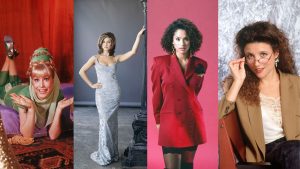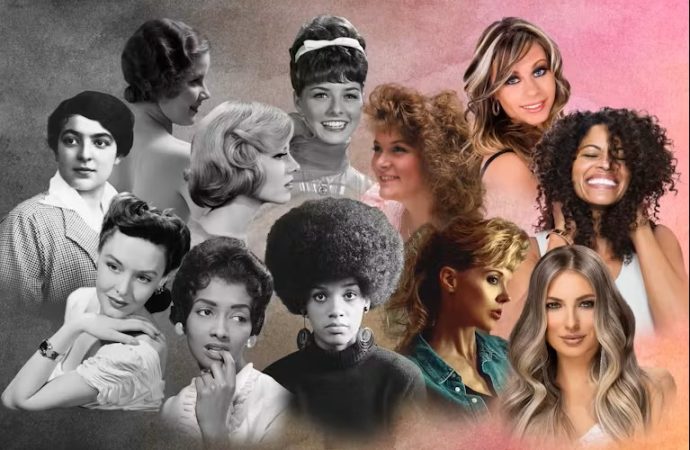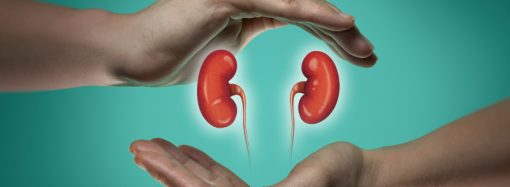Introduction Hairstyles tell stories about who we are and where we come from. From simple braids in ancient villages to bold, colorful cuts on today’s city streets, hair has always been more than just strands on our heads. It reflects culture, status, and personal expression. In this journey, Dr. Michael S. Kaminer guides us through
Introduction
Hairstyles tell stories about who we are and where we come from. From simple braids in ancient villages to bold, colorful cuts on today’s city streets, hair has always been more than just strands on our heads. It reflects culture, status, and personal expression. In this journey, Dr. Michael S. Kaminer guides us through the twists and turns of hairstyle evolution. You will learn how ancient tools, royal courts, and pop culture moments shaped the way we wear our hair. By understanding these changes, you gain new appreciation for the style choices you make every day.
Ancient Hairstyles: Tools of Identity

Image by: Yandex.com
Thousands of years ago, early humans used whatever they could find—bones, shells, and stones—to style their hair. In Egypt, both men and women braided their hair into neat rows and added beads for prestige. Wigs made from human hair or wool were common among nobles. These wigs spoke of wealth and power. In China, jade combs and oil from camellia flowers kept hair smooth and shiny. Hairstyles marked life stages—girls wore long braids, while married women chose elaborate updos. Across Africa, tribal patterns in cornrows served as social maps, showing family ties and age groups. These ancient styles laid the foundation for hair as a symbol of identity.
Medieval to Renaissance: Symbols of Status
In medieval Europe, hair covered by veils or wimples showed modesty and piety. Only married women might reveal their hair in public, and even then, it was bound by cloth. As the Renaissance arrived, the focus shifted to beauty and art. Women loosened their hair into flowing waves, often adorned with pearls or flowers. Men sported cropped cuts with bangs, influenced by classical statues and poets. Courts in Italy and France competed with elaborate headdresses and curls that framed powdered faces. Hairstyle evolution in this era mirrored wider cultural changes—art and learning bloomed, and hair became a canvas for beauty.
17th to 19th Centuries: Extravagance and Innovation
The 1600s and 1700s brought towering wigs to European courts. Men and women let their hair grow long, then piled it into gravity-defying shapes. White powder and scented pomades hid natural hair color and odor. These wigs were costly symbols of class and fashion. By the 1800s, Romanticism encouraged a return to softer looks. Ringlets and gentle curls fell around women’s faces. Men adopted facial hair—beards and mustaches signified ruggedness and maturity. The invention of the comb and heated tongs allowed for more controlled curls and waves. This period shows how technology and social ideals guide hairstyle evolution.
Early 20th Century: From Gibson Girls to Bob Cuts
As the new century dawned, hairstyles moved toward simplicity and practicality. The Gibson Girl look—voluptuous upswept hair—gave way to shorter, freer styles. World War I saw women entering factories, and long hair was often tied back for safety. After the war, the 1920s brought the iconic bob cut. Women chopped their hair to chin length, symbolizing independence and modernity. Men’s hair also adapted, with clean parts and slicked-back styles. Hair care products like setting lotion and early hairdryers made new looks possible. In a few decades, hair went from ornamental to a statement of social change.
Mid-20th Century: Rebellion and Pop Culture
The 1950s celebrated polished glamour. Women styled their hair in soft curls or neat beehives. Men preferred short sides and longer tops, combed back with pomade. Then came the 1960s, when youth culture rebelled. The Beatles’ mop-top and women’s beehives gave way to long, flowing locks. The hippie movement embraced natural hair—afros and loose waves symbolized freedom. The 1970s disco era polished hair with shine sprays, while punk in the late 1970s introduced spiked, brightly dyed cuts. Each subculture used hair to declare its values, making hairstyle evolution a visual diary of social shifts.
Late 20th to Early 21st Century: Diversity and Personal Style
By the 1980s and 1990s, hair trends multiplied. Big, voluminous styles ruled early on, then grunge brought messy, lived-in looks. Hip-hop culture introduced braids, fades, and cornrows into the mainstream. The rise of cable television and music videos meant styles spread faster than ever. Celebrities like Madonna, Prince, and later Beyoncé set global trends. Advances in styling tools—ceramic flat irons, blow dryers with diffusers—gave people more control. Today, social media amplifies niche trends, from pastel pixie cuts to elaborate braids. Hairstyle evolution now celebrates diversity, with room for every texture, length, and color.
Dr. Michael S. Kaminer’s Insights
Dr. Michael S. Kaminer has studied hair science and cultural history for over two decades. He notes that hairstyle evolution mirrors broader changes in technology, economy, and social values. When new tools emerge, people experiment. When societies shift, hair becomes a badge of identity. Dr. Kaminer stresses that hair is a living art form. It grows, responds to the elements, and changes with our moods. He encourages embracing styles that reflect who you are today, while respecting the traditions that shaped hair’s rich history. His research shows that understanding the past helps you make bold, informed choices for the future.
Cultural Influences on Modern Hair Trends
In our global age, hairstyle evolution draws from everywhere. Korean pop stars inspire sleek, colorful cuts. African diaspora communities popularize intricate braiding styles. Latinx cultures bring in layered curls and bold bangs. Technology—like virtual try-on apps—lets you preview a haircut before stepping into the salon. Eco-friendly trends encourage all-natural products and low-waste routines. As people migrate and cultures mix, hair becomes a meeting place of tradition and invention. Today’s trends are not just about looking good—they can spark conversations about heritage and identity.
Tips for Embracing Hairstyle Evolution

Image by: Yandex.com
- Know Your Hair Type: Understand your texture—straight, wavy, curly, or coily—and choose styles that work with it.
- Consult the Past: Browse photos of past eras to find inspiration that suits your face shape and lifestyle.
- Invest in Tools: A quality comb, brush, and heat tool can make styling safer and more precise.
- Use the Right Products: Match shampoos and conditioners to your hair’s needs—moisture, volume, or color protection.
- Experiment with Color: Even a small change, like subtle highlights, can refresh your look.
- Maintain Health: Regular trims and scalp care keep hair strong and ready for any style.
By combining historical insight with modern techniques, you can craft a hairstyle that honors the past and embraces the future.
The Future of Hairstyle Evolution
What comes next in hairstyle evolution? Dr. Kaminer predicts that smart mirrors and AI could personalize styles based on your face, mood, and even weather. Bio-engineered hair products might deliver protein treatments directly through color dyes. Virtual reality salons could let you test bold colors without commitment. Yet, he believes the core of hairstyle evolution will remain the same: personal expression. As long as people seek new ways to share who they are, hair will continue to surprise and delight. The journey is far from over, and each new day brings a fresh chapter in hair’s unfolding story.
Conclusion
From ancient braids to modern fades, hairstyle evolution shows how hair reflects our changing world. Guided by Dr. Michael S. Kaminer, we have traced this journey through eras of art, rebellion, and innovation. Each style carries echoes of history and hints at tomorrow’s possibilities. As you choose your next look, remember that you are part of this ongoing story. Let your hair be a flag of your heritage, values, and creativity. With respect for the past and eyes on the future, you can write your own page in the ever-evolving tale of hairstyle.

















Leave a Comment
Your email address will not be published. Required fields are marked with *